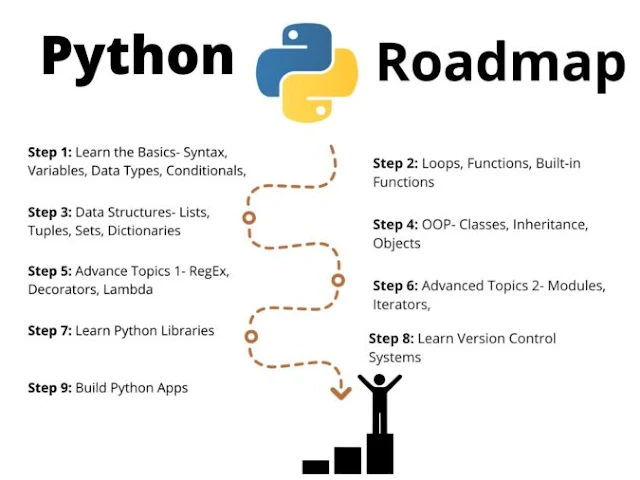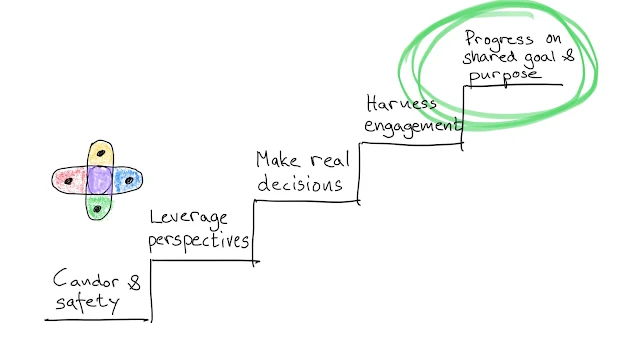In today's article, I will tell you about Python, what is Python, how Python is used, what is Python for, and why. I will tell you all this in detail in this article. If you want to learn the Python Beginners Program, I will tell you all in detail.
Python Beginners Program
PYTHON is a language that is used for a lot of
coding these days. Python is a general-purpose language, meaning it can be used
to create a wide variety of programs. Along with its early friendliness, it has
made it one of the most widely used programming languages today. The reason for
this is that it is easy compared to all other languages and you will get enough
features in it which will make your work easier. The question is, is the
Python Beginners Program useful? Python Beginners Program means that
those who want to learn Python are called beginners.
Installing Python
Learn how to easily
download and install Python on your laptop or computer.
1.
Go to the Python download page: https://www.python.org/downloads/.
2.
Choose the version of Python that you want to
install. For most users, the latest version of Python 3 is the best choice.
3.
Click the "Download Python" button.
4.
Once the download is complete, run the
installer.
5.
Follow the on-screen instructions to complete
the installation.
After Python is
installed, you can verify that it has been installed correctly by opening a
command prompt and typing the following command.
python –v
This command should
print the version of Python that is installed on your computer.
If you are using a Mac
or Linux computer, you can also install Python using the package manager.
For example, on a Mac, you can use the following command to install Python.
brew install python3
Once Python is
installed, you can start writing Python programs. You can do this by creating a
text file with a .py extension and then saving it in a directory where Python
can find it. For example, you can create a file called hello_world.py
and save it in your home directory.
To run the program,
you can open a command prompt and navigate to the directory where the file is
located. Then, type the following command:
python
hello_world.py
This will run the
program and print the text "Hello, World!" On the console.
Learning Python Beginners Program Skills
I provided some
important TIPS about the Python Beginners Program
1.
Write your first program in Python.
2.
Explore packages to better manage projects.
3.
Learn Python basics, including the following
elements: Boolean types. Strings. Mathematical operations. Lists and loops.
Dictionaries. Functions. Error checking.
4.
Get familiar with Jupyter notebooks.
Learning Python for Beginners (Step-By-Step)
Mastering the
intricacies of Python turned out to be a great challenge for me, yet it didn't
have to be.
A little over a
decade ago, I stood as a university alumnus with a history degree with dim
career prospects. After that, I transitioned into a developing machine learning
artisan, and a consultant in the data science realm, and now, I proudly hold
the position of CEO at Dataquest.
However, I must
stress, this narrative did not unfold overnight. My python-catching odyssey was
long, full of failures, and often with the bitter taste of discouragement.
After all, if I were
to start this journey all over again, I would enthusiastically implement the
strategies I am about to share in this exhibit. Such a course would undoubtedly
have accelerated my professional career, saving me countless hours and a lot of
hassle.
This collection aims
to illuminate the path to mastering Python most effectively.
1.
Set a goal. Why do you want to learn
Python? Are you interested in data science, web development, or something else?
Once you know your goal, you can tailor your learning accordingly.
2.
Learn the basics. This includes the Python
syntax, data types, operators, and control flow statements. There are many free
resources available online to help you learn the basics.
3.
Practice regularly. The best way to learn
Python is by practicing. Try to solve coding problems or write small programs.
There are many online challenges and tutorials that you can use.
4.
Build projects. Once you have a good
understanding of the basics, start building projects. This will help you apply
what you have learned and solidify your understanding.
5.
Find a mentor or community. Having someone
to help you learn and answer your questions can be very beneficial. There are
many online forums and communities where you can connect with other Python
learners.
Phase 1: Comprehending the Common Pitfalls
Unraveling the
complexities of Python need not be an arduous endeavor. In reality, when armed
with the appropriate resources, the journey can assume an effortless and even
enjoyable disposition.
The Predicament with Conventional Learning Avenues
Numerous educational
offerings tend to convolute the process of learning Python unnecessarily. To
substantiate this assertion, I shall furnish a personal anecdote.
When I embarked on
my initial foray into Python, my aspirations revolved around engaging in
captivating endeavors like web development. Regrettably, the course I enrolled
in coerced me to dedicate an inordinate amount of time to mastering syntax, an
ordeal that left me dispirited.
As the course
progressed, Python's code remained an enigma, an inscrutable foreign language
that seemed wholly alien. The rapid waning of my enthusiasm came as no
surprise.
Lamentably, this is
a predicament that plagues most Python tutorials. They presuppose that one must
first grapple with the entirety of Python's syntax before venturing into more
stimulating pursuits. Is it any wonder that many individuals throw in the towel?
Instead of
squandering valuable time on these mundane endeavors, you could be immersed in
the exhilarating realms of Python. Consider the prospect of data analysis,
website construction, or the creation of an autonomous drone powered by
artificial intelligence!
An Alternative Path
After enduring a
series of futile attempts, I serendipitously chanced upon a methodology that
resonated with me. I daresay it represents the quintessential approach to
mastering Python programming.
Initially, I allocated
the least possible time to the rote memorization of Python's syntax.
Subsequently, I promptly applied the knowledge thus acquired to a project that
genuinely enthralled me.
The steps outlined
below not only promise a more enjoyable learning voyage but also facilitate an
astonishing rate of progress!
Indeed, this
unconventional approach to learning prompted the inception of Dataquest. Our
data science courses empower learners to engage in project-based learning with
minimal investment in the drudgery of syntax memorization. Delve into our
courses here, and the process commences without cost.
Phase 2: Discerning Your Driving Force
The auspicious news
is that anyone can ascend to a commendable echelon of Python proficiency, given
the appropriate motivating catalyst.
In my nascent days
as a Python novice, I found myself grappling with somnolence while endeavoring
to commit syntax to memory. However, when the occasion arose to wield Python
fundamentals in the pursuit of a compelling project, I willingly sacrificed
sleep to witness it to fruition.
The salient lesson
here is unequivocal: to spur your Python journey, you must identify your unique
source of motivation and kindle a fervent enthusiasm for it. To embark upon
this journey, identify one or two domains that pique your interest:
- Data Science /
Machine learning
- Mobile Apps
- Websites
- Computer
Science
- Games
- Data Processing
and Analysis
- Hardware /
Sensors / Robots
- Automating Work
Tasks
Phase 3: Learn the Basic Syntax, Quickly
Step 3:
Grasping the Essentials of Syntax
I understand, and I
concur that we aim to allocate the minimum conceivable time to the intricacies
of syntax. Alas, this phase cannot be entirely circumvented.
Here, you'll find a
selection of invaluable resources designed to acquaint you with Python's
fundamental building blocks without dampening your enthusiasm:
1.
Dataquest – Introduction to Python Programming
Course: This resource was
born out of my desire to simplify the learning of Python and data science. At
Dataquest, Python syntax is taught in conjunction with the broader scope of
data science. For instance, you'll unravel basic Python commands while delving
into the analysis of weather data.
2.
Learn Python the Hard Way: An instructive tome that elucidates
Python concepts, commencing from the rudiments and extending to more intricate
programs.
3.
The Python Tutorial: This tutorial, found on the official
Python website, is a wealth of Python wisdom.
I cannot
emphasize this sufficiently: Acquire
a grasp of the syntax that is indispensable and swiftly advanced. In an ideal
scenario, allocate a few weeks to this phase, but do not prolong it beyond a
month.
The sooner you
immerse yourself in practical projects, the swifter your mastery shall burgeon.
Should the need arise, you can always revisit the syntax at a later juncture.
A brief
caveat: Focus your
attention on learning Python 3, as Python 2 has been discontinued, rendering it
susceptible to unresolved bugs and security vulnerabilities.
Step 4: Crafting Methodical Endeavors
Once you have honed
your comprehension of basic Python syntax, commence your journey into the realm
of projects. Swiftly applying your newfound knowledge will serve to reinforce
your understanding.
It is advisable to
embark on structured projects initially, gradually gaining the confidence to
undertake independent ventures. At Dataquest, we have thoughtfully incorporated
structured projects into nearly all our Python courses. This approach enables
you to promptly apply your acquired skills.
Here are a few
examples of authentic Dataquest projects. Which one stirs your curiosity?
1.
Learning and Installing Jupyter Notebook: Operate Python code within a Jupyter
Notebook and acquire insights into local Jupyter installation.
2.
Building a Word Guessing Game: Delight in the creation of a fully
functional and interactive word-guessing game using Python.
3.
Building a Food Ordering App: Engage in the development of a
practical and interactive food ordering application using Python.
4.
Data Cleaning and Visualization Star Wars-style: Enthusiasts of Star Wars are in for a
treat with this structured project employing real data from the beloved
franchise.
5.
Predicting Car Prices: Embark on a journey through the machine
learning realm as you predict car prices utilizing the machine learning
workflow.
6.
Predicting the Weather Using Machine Learning: Learn the ropes of training a machine
learning model for weather forecasting.
7.
Exploring eBay Car Sales Data: Analyze and cleanse an authentic
dataset concerning car sales on the eBay platform.
8.
Predicting Heart Disease: Construct a k-nearest neighbors
classifier to forecast potential instances of heart disease.
Inspiration for Methodical Endeavors
Regarding methodical
projects, there exists no singular point of origin. The ideal resources for you
hinge upon your motivations and your Python programming aspirations.
Do you harbor a
passion for data science or machine learning? Are you interested in crafting a
specific application or website? Here are some suggested resources to ignite
your inspiration, categorized by your field of interest:
Data Science / Machine Learning
- Dataquest: A platform
that provides interactive instruction in Python and data science. Explore
an array of captivating datasets, from CIA documents to NBA player
statistics. Eventually, delve into the creation of intricate algorithms,
including neural networks and decision trees.
- Scikit-learn
Documentation:
The primary Python machine learning library, Scikit-learn, boasts
extensive documentation and instructive tutorials.
- CS109: A Harvard
course designed to teach Python for data science. Some of their projects
and supplementary materials are available online.
Mobile Apps
- Kivy Guide: A guide to
using Kivy, a tool that facilitates the development of mobile apps with
Python.
Websites
- Bottle Tutorial: A guide for
getting started with Bottle, another web framework for Python.
- How To Tango
With Django: A
comprehensive guide to leveraging Django, a sophisticated Python web
framework.
Games
- Dataquest: As you
progress through your initial course, you'll craft a word-guessing game
using Python. This skill path also leads to the development of a fully
functional food-ordering app.
- Pygame
Tutorials: A
compilation of tutorials for Pygame, a popular Python library for game
creation.
- Making Games
with Pygame: A
book offering guidance on constructing games in Python.
- Invent Your Computer
Games with Python: A book guiding you through the development of various games
using Python.
Explore these
resources, align them with your passions and objectives, and set forth on your
Python programming journey.
Step 5: Embark on Independent Python Endeavors
Once you've
completed several structured projects, it's time to elevate your Python
journey. Accelerate your learning curve by delving into self-initiated Python
projects.
The key to success
here is to commence with modest projects. It's preferable to bring a small
project to fruition rather than embark on an ambitious endeavor that remains
perpetually incomplete.
8 Tips for Unearthing Intriguing Python Endeavors
I comprehend that
sourcing engaging Python projects can be an intimidating task. To assist you in
this quest, here are some pointers for discovering compelling undertakings:
1.
Enhance Previous Projects: Expand upon the groundwork laid by your
prior projects and incorporate additional functionalities.
2.
Explore Beginner-Friendly Python Projects: Peruse our collection of Python
projects curated for beginners.
3.
Attend Local Python Meetups: Attend Python meetups in your vicinity
and connect with individuals immersed in intriguing projects.
4.
Contribute to Open Source Packages: Discover open-source packages that
welcome contributions from developers.
5.
Engage with Nonprofits: Investigate if local nonprofit
organizations require volunteer developers.
6.
Adapt Existing Projects: Identify projects crafted by others and
endeavor to extend or tailor them to your unique vision. GitHub serves as an
excellent starting point.
7.
Peruse Blog Posts: Traverse the blogosphere to glean
inspiration from fellow developers' project ideas.
8.
Craft Tools for Daily Life: Ponder tools that could streamline your
everyday existence and set about constructing them.
17 Python Project Ideas to Stoke Your Creativity
For an extra dose of
inspiration, here are supplementary project concepts to ignite your creative
spark:
Data Science/Machine Learning Project Ideas
1.
Election Polling Visualization: Fashion a map that offers a visual
representation of election polling data by state.
2.
Local Weather Predictor: Develop an algorithm capable of
forecasting local weather conditions.
3.
Stock Market Prediction Tool: Create a tool employing machine
learning to predict stock market trends.
4.
Automated News Summarizer: Construct an algorithm that
automatically generates summaries for news articles.
Remember, your
projects serve as invaluable avenues for honing your skills, mastering new
Python concepts, and demonstrating your prowess to potential employers. Embrace
the challenge and embark on a journey of continuous learning and innovation.
Step 6: Progressing to More Complex Endeavors
As you taste the
fruits of success with independent projects, it's time to take on more
intricate and extensive challenges. Remember, mastering Python is a journey,
and momentum is your ally.
Here are five
prompts to guide you on the path of Python mastery:
1.
Teaching: Try teaching a novice how to build one of your projects. Teaching
reinforces your understanding and exposes you to different perspectives and
challenges.
2.
Scaling Your Tools: Evaluate the scalability of your
creations. Can they handle more data, increased traffic, or expanded
functionality? This exploration fosters a deeper understanding of system
architecture.
3.
Optimizing Performance: Experiment with techniques to enhance
your program's execution speed. Learning to optimize code is a valuable skill.
4.
Broadening Utility: Consider how to make your tools
accessible to a wider audience. Can you adapt your creations to cater to a
broader demographic?
5.
Commercialization: Explore avenues for commercializing
your projects. Monetizing your Python skills can be a rewarding endeavor.
Python's Ongoing Evolution
Always bear in mind
that Python is in a perpetual state of evolution. Even the most seasoned Python
developers find themselves continuously learning. This serves as a testament to
the language's vibrancy and constant innovation.
Where does this
leave you? Embracing the journey of perpetual learning and undertaking novel
projects to refine your skills. Six months from now, you might scrutinize your
current code and marvel at how far you've come. Such moments of reflection
signify you're on the right path.
Python Learning Resources for Overcoming Challenges
Obstacles are a
natural part of the learning process. When you encounter errors or problems
with your code, do not be disheartened. Instead, harness these resources to
surmount challenges:
1.
Stack Overflow: A thriving community-driven platform
where individuals discuss and resolve programming issues. You can find
Python-specific questions and answers here.
2.
Google: The quintessential tool for any proficient programmer. It's
invaluable for troubleshooting and resolving errors. A simple online search can
often yield solutions.
3.
Python Documentation: A comprehensive reference source for
Python. It contains detailed information on the language's features and
functions.
Moving Forward with Python
Always remember that
Python is a dynamic and versatile language with relevance beyond the realms of
data science and machine learning. It finds application in a myriad of
professional domains.
Whether you thrive
with minimal structure or prefer a guided approach, the resources are at your
disposal to embark on your Python journey. If you lean toward the latter,
consider exploring our courses at Dataquest, designed to expedite the learning
process while bypassing common stumbling blocks.
If your aspirations lead
you toward roles such as business analysis, data analysis, data engineering, or
data science, we offer career paths tailored to transform beginners into
job-ready professionals in a matter of months. Alternatively, you can dip your
toes into the waters with our introductory Python course.
Common Python Queries
1.
Is Learning Python Challenging?: While Python can present challenges,
the step-by-step approach outlined here simplifies the learning process.
2.
Can Python be Learned for Free?: Numerous free Python learning resources
are available, including Dataquest's collection of free Python tutorials.
However, premium platforms often offer structured and efficient learning paths.
3.
Can Python be Learned with No Prior Coding
Experience?: Absolutely.
Python is beginner-friendly and doesn't require prior coding experience. Many
individuals with no coding background have successfully transitioned to roles
such as data analysts, data scientists, and data engineers through Python.
4.
How Long Does it Take to Learn Python?: Mastering basic Python code is
achievable relatively quickly. The duration required to become job-ready
depends on your goals, the specific role you seek, and your study time.
5.
How to Accelerate Python Learning?: Focus on learning Python specifically
tailored to your desired skill or field, be it game development or data
science.
6.
Is a Python Certification Necessary for
Employment?: In
fields like data science, certificates hold less weight than practical skills
and portfolios. A GitHub repository showcasing your Python projects often
speaks louder.
7.
Python 2 or Python 3?: Python 3 is the unequivocal choice, as
Python 2 is now obsolete.
8.
Is Python Relevant Beyond Data Science and
Machine Learning?: Yes,
Python finds applications in a wide array of domains, including finance, web
development, software engineering, game development, and more.
Python's reach is limitless, and your journey promises constant learning and growth. In time, you'll look back at your code and marvel at your progress. Embrace this evolution and embark on your Python adventure today.















0 Comments